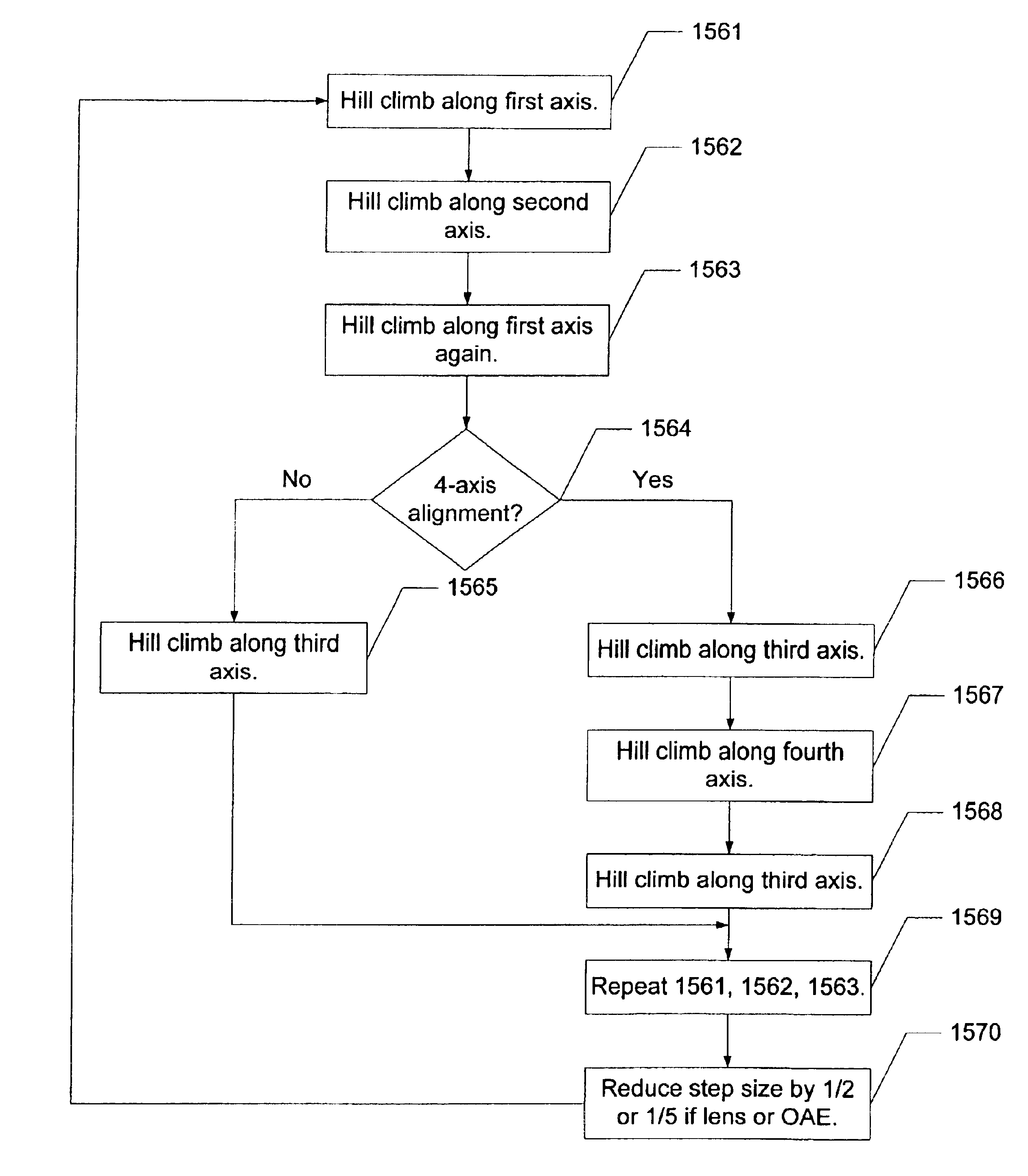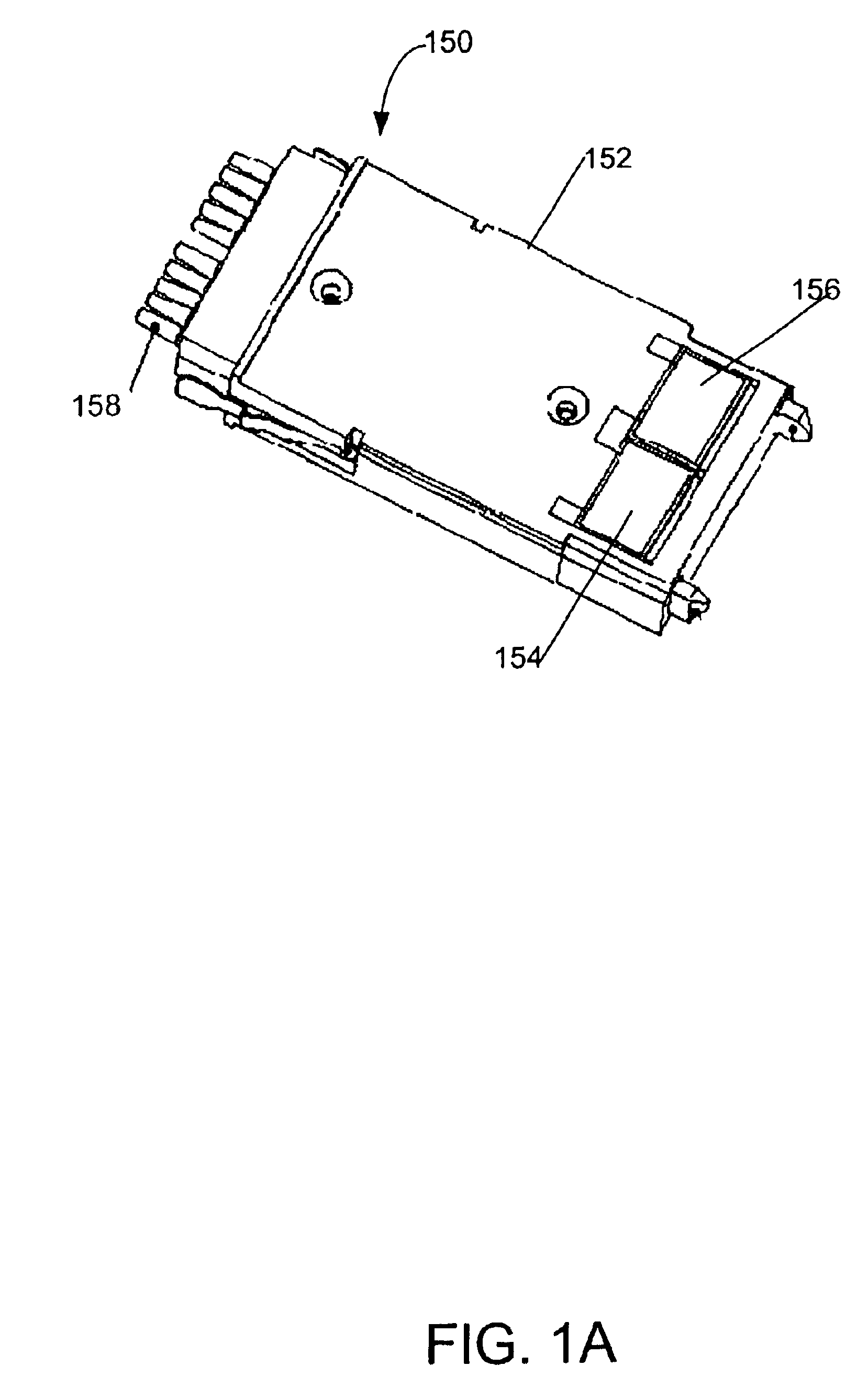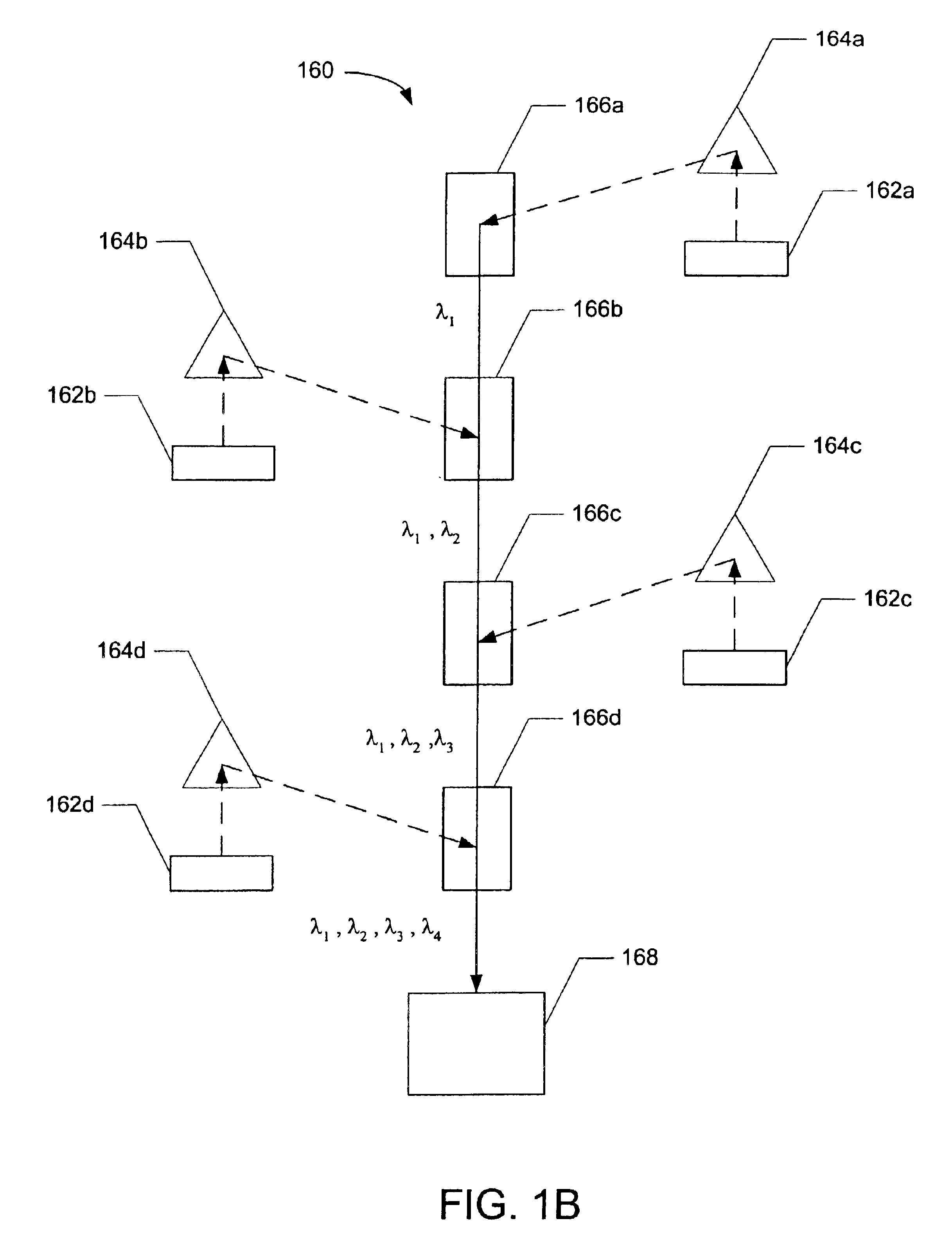System and method for optical multiplexing and/or demultiplexing
a fiber optic network and multiplexing technology, applied in the direction of optical elements, angle measurement, instruments, etc., can solve the problems of difficult alignment of source or target, complex and time-consuming manipulation of multiple interdependent components, and different alignment errors in each beam path, so as to improve the ease of manufacturing of optical devices, reduce manufacturing costs, and compact design
- Summary
- Abstract
- Description
- Claims
- Application Information
AI Technical Summary
Benefits of technology
Problems solved by technology
Method used
Image
Examples
Embodiment Construction
[0057]Improved methods and systems for routing and aligning beams and optical elements in an optical device are described below. The following description is presented to enable one of ordinary skill in the art to make and use the invention and is provided in the context of a patent application and its requirements. Various modifications to the preferred embodiment will be readily apparent to those skilled in the art and the generic principles herein may be applied to other embodiments. Thus, the present invention is not intended to be limited to the embodiment shown but is to be accorded the widest scope consistent with the principles and features described herein.
[0058]FIG. 1A illustrates an embodiment of WDM and WDDM devices in a GBIC form factor. The module 150 comprises the GBIC housing 152, which is part of the GBIC form factor, as defined by the GBIC specification. The module 150 may also comprise a connector which is compatible with the electrical interface defined by the GB...
PUM
 Login to View More
Login to View More Abstract
Description
Claims
Application Information
 Login to View More
Login to View More - R&D
- Intellectual Property
- Life Sciences
- Materials
- Tech Scout
- Unparalleled Data Quality
- Higher Quality Content
- 60% Fewer Hallucinations
Browse by: Latest US Patents, China's latest patents, Technical Efficacy Thesaurus, Application Domain, Technology Topic, Popular Technical Reports.
© 2025 PatSnap. All rights reserved.Legal|Privacy policy|Modern Slavery Act Transparency Statement|Sitemap|About US| Contact US: help@patsnap.com



